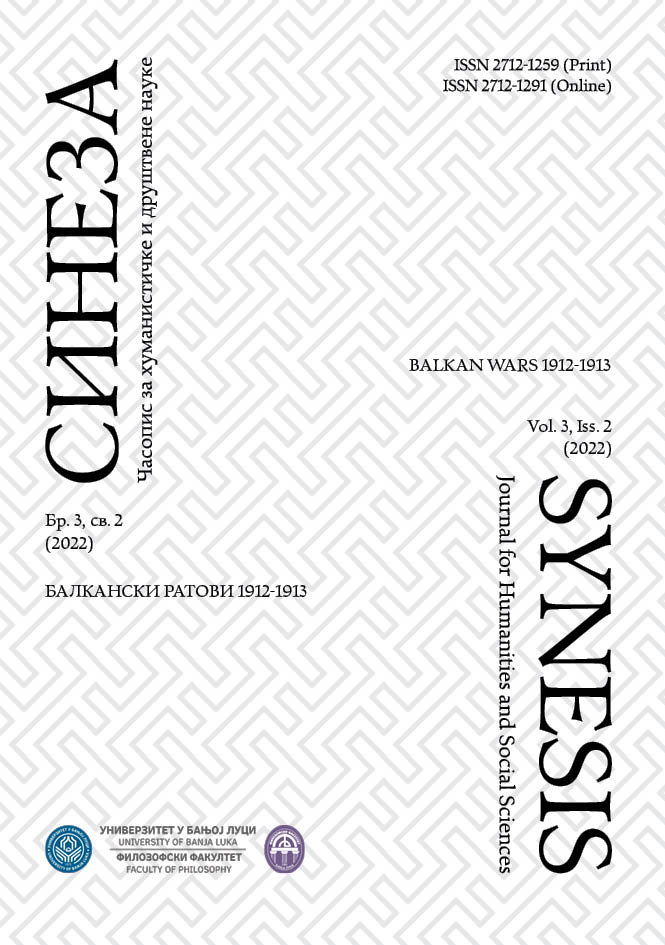Први балкански рат у бечким сатиричним листовима
Први балкански рат у бечким сатиричним листовима
Author(s): Stojanka LužijaSubject(s): Cultural history, Military history, Political history, Pre-WW I & WW I (1900 -1919)
Published by: Filozofski fakultet, Univerzitet u Banjoj Luci
Keywords: caricatures; Balkan Alliance; Ottoman Empire; Austro-Hungarian Monarchy;
Summary/Abstract: In this paper, the author analyzes caricatures published during the First Balkan War in the Viennese satirical newspapers Die Muskete, Kikeriki, and Wiener Caricaturen. The primary goal of the paper was to examine the content, symbolism, and verbal and nonverbal messages of individual caricatures, in order to show a potential pattern of negative prejudices (i.e., stereotypical typification of various personalities and events of the First Balkan War from the angle of the Viennese satirical press). In addition to the analysis of allegorical prejudices about the members of the Balkan Alliance, special attention in this paper is given to the examination of the treatment of Pan-Slavism and Russian influence on Balkan events, and also the acute problem of maintaining the Ottoman Empire and the issue of Albania. We sought to determine whether the caricatures were merely a public newsletter or served to model public opinion as a propaganda tool. We noticed that although the observed newspapers had a different editorial structure and readership, their caricatures of the First Balkan War were dominated by the narrative of Austro-Hungarian official foreign policy. As we have shown, that policy reflected in the humiliation of the Balkan Alliance members, the striving to keep the Ottoman Empire alive, emphasizing the fear of Pan-Slavism, and the inevitability of creating an Albanian state under the Austro-Hungarian protectorate. The stereotypical typification of the members of the Balkan Alliance (their rulers and peoples) not only intensified the already existing negative prejudices in the Austro-Hungarian public opinion but also created new ones. In that sense, caricatures had a suggestive and propagandistic role.
Journal: Sineza
- Issue Year: 3/2022
- Issue No: 2
- Page Range: 65-80
- Page Count: 16
- Language: Serbian

